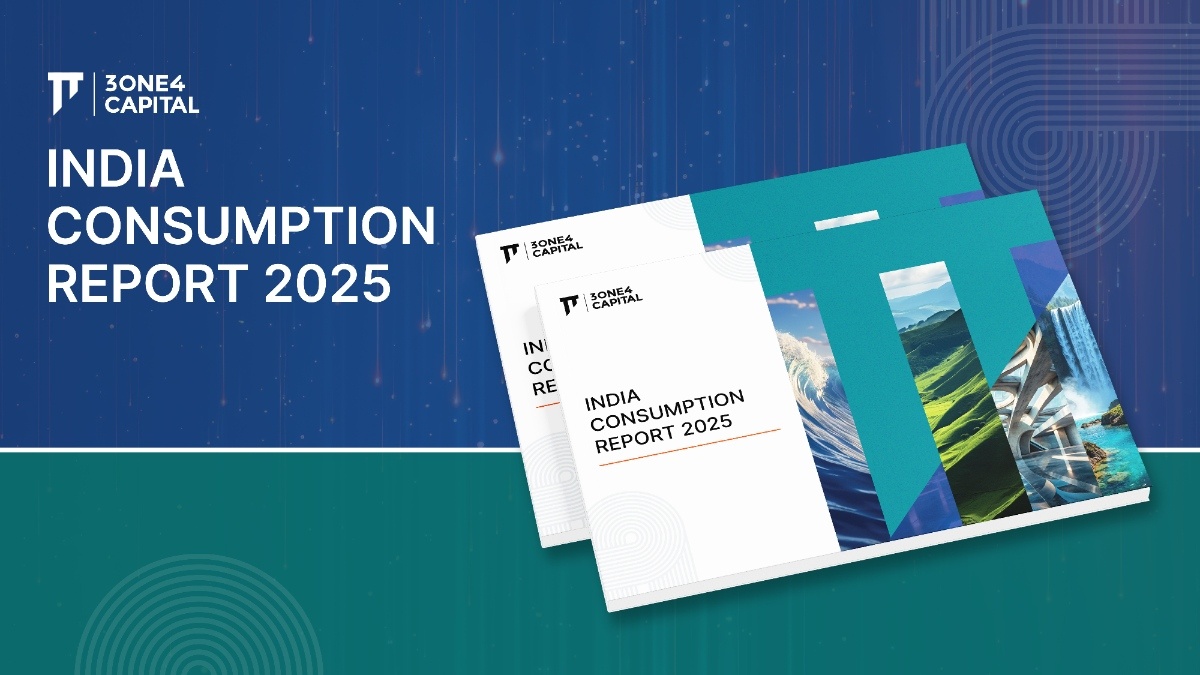
Climate-Tech: India’s Major Imperatives
To state that climate change is a defining challenge of our times would amount to an insincere encapsulation of our zeitgeist. Over the past two decades alone, atmospheric concentration of carbon dioxide has crossed the 400 parts per million (ppm) symbolic threshold, global mean sea level has risen by almost 3 inches, and global ice losses have soared to over 1.2 trillion tons per year.
Climate change has imperilled food and water security, halted advances towards ensuring global energy access, induced distress migration, adversely impacted global health and nutrition outcomes, and threatened livelihood patterns of thousands of communities across the world. In the Global Risks Report 2023 released by the World Economic Forum, “failure to mitigate climate change”, “failure of climate change adaption”, and “natural disasters and extreme weather events” were perceived to be the three most severe long-term risks by experts and global thought leaders.
The most vulnerable are developing countries like India, which often find themselves with the largest scale challenges to address: having an outsized portion of their population being vulnerable to the worst impacts of climate change while needing to synthesise the cutting edge of advances in climate finance and technology to catalyse a rapid transition. This is why despite having incredibly low per capita emissions (see Figure 1), India finds itself at the centre of the mitigation game.

The rise of an aspirational middle class coupled with an expanding economic base; a growing proliferation of personal and commercial transport; increasing urbanisation, industrialisation, and infrastructure development—especially with respect to buildings construction and cooling provision—will eventuate the largest increase in energy demand of any country by 2040 according to the International Energy Agency (IEA). Fulfilling this increased demand for energy will require the set up of an additional power generation and transmission system the size of the European Union over the next twenty years. Over this same period, India will cement its position as the world’s most populous nation, adding the equivalent of a city the size of Los Angeles to its urban population each year.
India’s management of its future resource demand thus presents an unprecedented economic opportunity and will have seismic consequences not just for Asia but the planet as a whole. A technology-first, step-function congruent approach that dexterously leverages climate-tech can aid the country in managing this resource burden sustainably in its move towards becoming a low-carbon economy.
India’s Major Imperatives for Bolstering Climate-Tech Innovation
The systematic harnessing of progressively more efficient, convenient, and flexible forms of energy has been the cornerstone of civilisational progress over millennia. Energy is a universal and timeless currency, malleable enough to allow for the moulding of a wide variety of economic, cultural, and technological instruments and institutions across the spectrum of human history. The prevailing dominant stage of energy evolution, namely fossil fuel driven energy production, has proved to be particularly difficult to displace despite the finitude of fossil fuels and their other rather obvious drawbacks. And there are multiple reasons for that.
- We have not as yet been able to find, or devise, a suitable substitute for oil, one that could match its adaptability, availability, and abundance across use cases. On the other hand, the technology used to extract it has only been getting better, thereby making extraction both less cumbersome and more economical. The same holds true for natural gas to a considerable extent as well.
- Both coal and oil have developed deeply entrenched niches for themselves across a variety of use cases, most notably in electricity production and transportation, respectively. Coal, for instance, still accounts for over 35% of the global electricity mix. In India, the share of coal in power generation has lingered around the 70% mark for several decades. Weaning either sector off its preferred energy source would require considerable effort, mobilisation, and investment to overcome the prevailing energy inertia.
- Fossil fuels offer incredibly high energy densities and provide high degrees of heat with the promise of a steady, uninterrupted supply.
Climate-tech innovation is precisely the need of the hour because it has the potential to move the needle on these fronts substantively. While every innovation will not make a serious dent in the collective decarbonisation effort, the sheer scale and immediacy of the challenge warrant an all-hands-on-deck approach going forward. Even interventions which would, in isolation, seem inconsequential, can cumulatively create substantial impact when strategically deployed.
India’s energy consumption is destined to increase. Not only is India’s electricity demand set to increase six-fold by 2040, its energy demand for road transport is also set to double over the next two decades, and so is its building space and demand for oil. Prudentially designed interventions targeting each of these developments can help India temper the projections of enhanced resource use by reducing the overall carbon footprint, increasing efficiency, limiting waste, and implementing closed-loop practices.
In addition to synthesising innovation for emissions reduction, energy storage, climate monitoring, improved energy efficiency, and low carbon industry and transport, climate-tech can play an outsized role in enhancing energy access for scores of Indians. For instance, even though almost all of India’s households have been electrified, affordability, reliability, and retention of supply continue to be significant bottlenecks waiting to be addressed at scale. According to a survey by the Council of Energy, Environment and Water (CEEW), 76% of Indian households continue to face unanticipated supply interruptions, with two-thirds of rural and two-fifths of urban households facing outages at least once a day.
Similarly, with regard to clean cooking gas, data from the National Family Health Survey (NFHS-5) has shown that there is a wide gap between the number of households that have LPG connections and those which use them frequently. Mainstreaming energy access by catalysing clean energy solutions, boosting energy consumption for the most resource-deficient households, limiting supply interruptions, promoting distributed renewable energy, and enabling low-cost and low-energy consuming devices and applications are just some of the potential forays climate-tech interventions can make. Accelerating capital flows towards solutions of this sort and ensuring “access to affordable, reliable, sustainable and modern energy for all” in line with SDG 7 should form the normative raison d’etre for enterprises and investors in this sector.
Yet another possible avenue for the climate-tech sector in India relates to orderly and just management of the likely trade-offs that emerge when an economy-wide switch is made from fossil fuels to renewable energy. For instance, humanity has typically transitioned from relatively less dense sources of energy to sources that are both more energy dense and more convenient to use. But now, under the fourth energy transition, we seem to be aiming for a density reversal—going from concentrated fossil fuels to more dispersed renewable sources that pack a smaller punch per unit of weight and take up more land to produce (see Figure 2). This could translate into a greater quantum of land having to be allocated for energy production at a time when land resources are likely to be severely strained due to onerous demands from population increase, food production, and urbanisation.

To take another example, India’s solar energy generation capacity has increased more than 26x over the last nine years, going from a meagre 2.63 GW in 2014 to 70 GW by August 2023. With the growing pervasiveness of intermittent solar, the infamous “duck curve’’—the graphic representation portraying the need for progressively greater deployment of flexible, non-solar sources to counter the timing imbalance between peak demand and solar production shown in Figure 3—is potentially knocking on India’s doors.

Climate-tech solutions to address, or reduce the intensity of, challenges of this sort will be pivotal in ensuring that green technologies retain their momentum towards greater acceptance and usability. Simultaneously, they will prevent backsliding, making sure that the likelihood of a technological regression towards polluting, less green solutions is minimised.
The last point connects us to perhaps the most important innovation imperative for the climate-tech sector, namely the need to safeguard, fully leverage, and allow for compounding of the myriad gains of the transition. This entails backing prudential policy measures and avoiding suboptimal macro energy strategies such as treadmill decarbonisation—the replacement of one clean energy source with another without any substantial reduction in carbon emissions—which squander the emissions reduction potential of a clean energy source, usually nuclear, and thus provide a poor guide for climate-tech to follow.
On the other end of the spectrum, there are a number of associated gains that can be pursued once we commit to a greener future. At present, over 40% of maritime trade by weight consists “either of fossil fuels on their way to be burned or of chemicals derived directly from fossil fuels.” Shifting en-masse to renewable energy could, therefore, open up possibilities for reduced cargo use for energy purposes, decreased maritime emissions, as well as favourable outcomes for ocean flora and fauna. It is necessary that capital flows and technology upgradation for climate-tech stay ahead of the curve in order to readily identify and fully leverage virtuous cycles of opportunity of this sort before they become emergent.

It is vital that the potentialities emanating from the benefits of the transition, including serendipitous unintended consequences and indirect, knock-on effects are duly recognised and promptly seized. Seminal cross-cutting shifts to climate-conscious consumption, production, and investing constitute once-in-a-generation shifts and thus potentially offer once-in-a-generation social, economic, and environmental returns. India must act deliberately and expeditiously to secure these gains.
DISCLAIMER
The views expressed herein are those of the author as of the publication date and are subject to change without notice. Neither the author nor any of the entities under the 3one4 Capital Group have any obligation to update the content. This publications are for informational and educational purposes only and should not be construed as providing any advisory service (including financial, regulatory, or legal). It does not constitute an offer to sell or a solicitation to buy any securities or related financial instruments in any jurisdiction. Readers should perform their own due diligence and consult with relevant advisors before taking any decisions. Any reliance on the information herein is at the reader's own risk, and 3one4 Capital Group assumes no liability for any such reliance.Certain information is based on third-party sources believed to be reliable, but neither the author nor 3one4 Capital Group guarantees its accuracy, recency or completeness. There has been no independent verification of such information or the assumptions on which such information is based, unless expressly mentioned otherwise. References to specific companies, securities, or investment strategies are not endorsements. Unauthorized reproduction, distribution, or use of this document, in whole or in part, is prohibited without prior written consent from the author and/or the 3one4 Capital Group.


.webp)












